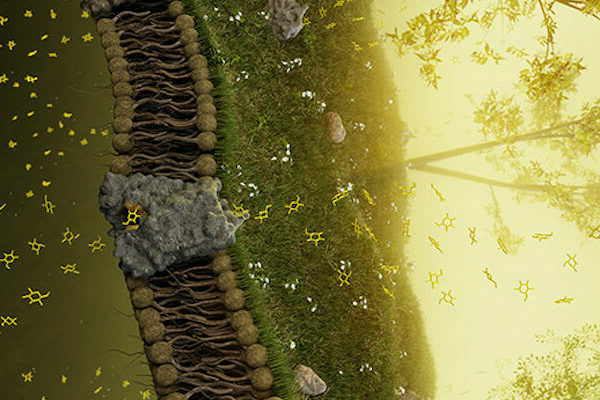In plants, Sugar Transport Proteins (STPs) are key for uptake of glucose. They are responsible for sugar import into plant organs such as seeds, pollen and fruit and are essential for correct tissue development. Moreover, controlling sugar uptake through STPs is used by plants as a vital defense strategy against microbial infection, by using starvation and competition for sugar to restrict microbial growth.
The results are a continuation of earlier research at Associate Professor Bjørn Panyella Pedersen‘s research group at the Department of Molecular Biology and Genetics. A major challenge to make progress in the field is to obtain structures of STPs in different conformations.
PhD Student and first author Laust Bavnhøj explains: “The STPs are highly dynamic membrane proteins that undergoes large conformational changes during transport. This flexibility present a great challenge as conformational stabilization is needed in order to facilitate structure solution by X-ray crystallography. This challenge was exacerbated because we needed the transporter in a very specific conformation in order to answer our questions. Based on our previous work, we could design mutants that worked to destabilize an outward facing conformation. This allowed us to break the “conformational dead water” and push our protein into a new inward facing conformation.”
The new work reports two crystal structures of Arabidopsis thaliana STP10. The structures represent two major states needed to understand the complete picture of substrate and proton co-translocation across the cell membrane and into the cell.
Structure and dynamics hand in hand
In a collaborative effort with Professor Birgit Schiøtt’s group from the Department of Chemistry at Aarhus University, the researchers also used state-of-the-art Molecular Dynamics simulations to support the notion of proton binding employing multiple independent approaches. The structures and Molecular Dynamics, in combination with a comprehensive biochemical characterization of STP10, offers evidence for a sugar uptake mechanism based on a well-defined glucose-binding site linked to a clear proton-binding site. Together, the findings provide the first evidence for the elements that are required for the substrate transport mechanism essential for all STPs, and other related protein families.
“Combining these methods, we were able to not only identify key elements involved in the transport cycle within STPs but also provide new evidence for regulatory mechanisms conserved within the sugar porter family across all kingdoms of life,” says Bjørn Panyella Pedersen. “We recently showed that this regulatory mechanism is also found in human sugar transporters, and our new work support the idea of a general scheme for kinetic control within the Sugar Porter family across evolution.”
Researchers at Aarhus University have just elucidated structures of a sugar transport protein that drives transport of sugar in plants. The study provides a comprehensive insight into sugar uptake into plant organs such as flowers, seeds and fruit. Future research can benefit from these discoveries to address challenges like food security through crop improvement.
Read the paper: Nature Plants
Article source: Aarhus University via Eurekalert
Image: Researchers at Aarhus University have just elucidated structures of a sugar transport protein that drives transport of sugar in plants. Future research can benefit from these discoveries to address challenges like food security through crop improvement. Credit: Rune Kidmose, Aarhus University








